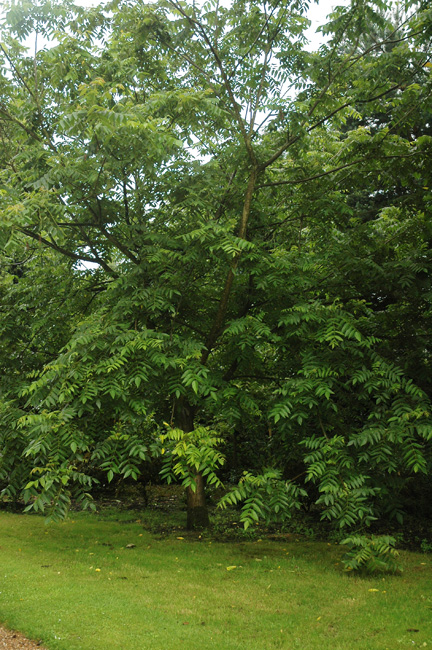
Woody > Juglans > Juglans cinerea > Juglans cinerea
Juglans cinerea
Butternut
Origin: New Brunswick to Georgia
Mike's
Opinion


"
A native tree found on dry upland areas where it grows amongst American Beech and Maple. It is seldom planted in the cultivated landscape since it has little ornamental value. The fruit is edible and voraciously consumed by the local forest wildlife. It produces Juglone so care needs to be taken with what is planted around it in the cultured landscape.
Michael Pascoe, NDP., ODH., CLT., MSc. (Plant Conservation)
"
| Family |
| Juglandaceae |
| Genus |
| Juglans |
| Species |
| cinerea |
| Category |
| Woody |
| Type |
| Tree (deciduous) |
| Pronunciation |
| USDA Hardiness Zone |
| 3-7 |
| Height |
| 25 m |
| Spread |
| 20 m |
Photographs
Description and Growing Information
Flowering Period
| General Description |
| Medium to large tree. |
| Cultivation |
| Prefers well drained, deep, fertile soil, and full sun. It is cultivated in particular for its edible nuts. |
| Shape |
| Large rounded crown |
| Growth |
| Medium |
| ID Characteristic |
| The bark of this tree is an ID trate. it is very furrowed and turns yellow when exposed to light. |
| Pests |
| Borers, mites and webworm are common pests that target this tree. |
| Bark/Stem Description |
| Furrowed and ridged. Greyish brown. Inner bark will turn yellow when exposed to light |
| Flower/Leaf Bud Description |
| Large terminal buds. Ovate, round. 1-3 superposed buds |
| Leaf Description |
| Showy green foliage. Leaves are oblong, serrate edges. Alternate and pinnately compounded. |
| Flower Description |
| Flower in spring with greenish yellow flowers. |
| Fruit Description |
| Spherical, solitary or cluster. Green when growing turning a brown colour when ripe. Edible nuts |
| Colour Description |
| Green with yellowish flowers complimented well with grey/brown bark |
| Texture Description |
| Rough and ridged bark. Smooth leaves |
| Propagation |
| Sow seeds as soon as the fruit is ripe in a seed bed. You may also stratify and sow in spring! |
References
Connon Nurseries, Waterdown Ontario.
